Cleaning a ceramic pipe is essential for maintaining its functionality and ensuring a pleasant experience with each use. Over time, residues and buildup can affect the pipe’s performance and flavor, so regular cleaning is crucial. This guide will provide you with step-by-step instructions on how to clean ceramic pipe, allowing it to shine and perform as if it were new. Whether you’re an experienced pipe user or new to the practice, these tips will help you keep your pipe in optimal condition effortlessly.
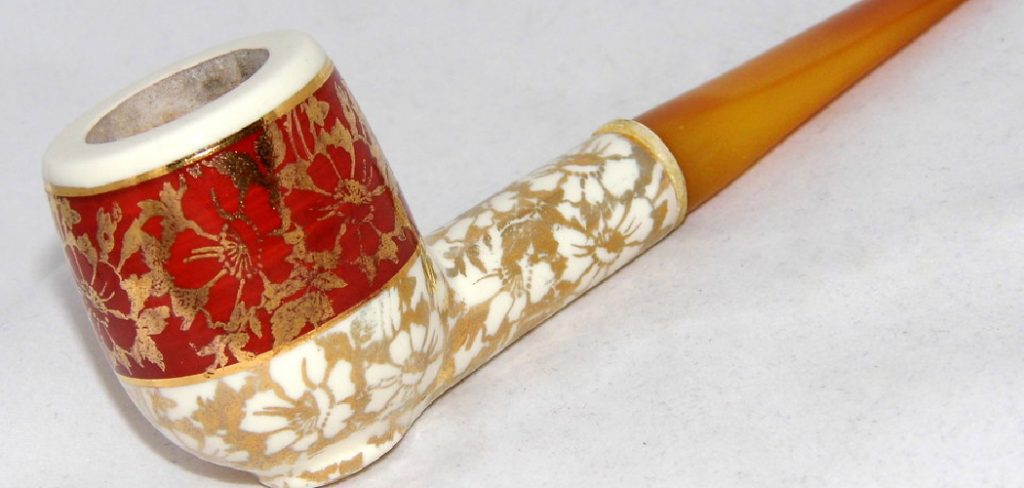
The Popularity of Ceramic Pipes
Ceramic pipes have grown in popularity due to their durability, aesthetic appeal, and the purity of flavor they provide. Unlike other materials, ceramics do not impart any additional flavors to the substance being smoked, allowing users to enjoy the true essence of their chosen material. Additionally, ceramic pipes are often crafted in artistic and unique designs, making them not only functional but also visually appealing. This combination of practical benefits and artistic expression has made ceramic pipes a favorite among both casual and serious enthusiasts. Their natural heat resistance and easy-to-clean surfaces further enhance their allure in the market, solidifying their position as a preferred choice for many.
Materials and Tools Needed for Cleaning
To effectively clean your ceramic pipe, gather the following materials and tools to ensure a thorough and efficient cleaning process:
- Isopropyl Alcohol (91% or higher): This acts as a solvent to break down the tar and resin residues inside the pipe.
- Coarse Salt: Serving as an abrasive, salt helps scrub away stubborn deposits when combined with the alcohol.
- Pipe Cleaners or Cotton Swabs: Ideal for reaching into narrow areas of the pipe to remove residue.
- Soft Brush: A small, soft-bristled brush (like a toothbrush) is useful for scrubbing the exterior and any larger interior surfaces.
- Resealable Plastic Bags or Containers: These allow you to soak parts of the pipe in alcohol without making a mess.
- Warm Water: Rinsing the pipe with warm water helps to remove any remaining cleaning solutions and loosened debris.
- Paper Towels or Soft Cloth: For drying the pipe post-cleaning and ensuring there are no water spots.
Having these materials and tools ready will prepare you to give your ceramic pipe a thorough clean, ensuring it remains in top condition for your next use.
10 Methods How to Clean Ceramic Pipe
1. Gather All Necessary Cleaning Supplies
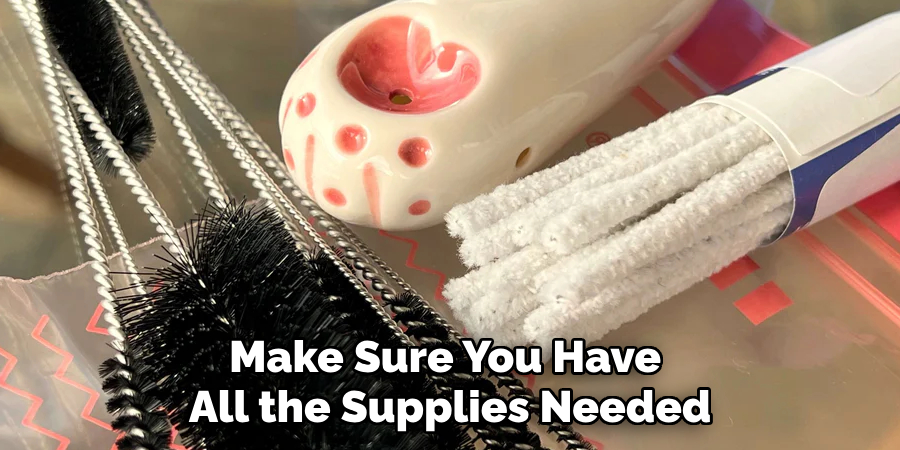
Before starting the cleaning process, make sure you have all the supplies needed for a thorough and efficient clean. Key items include isopropyl alcohol, cotton swabs, pipe cleaners, a soft brush, a ziplock bag, coarse salt, warm water, and paper towels or a soft cloth. Optional supplies might include a small container for soaking and a toothbrush for scrubbing difficult spots. Having everything on hand allows you to work efficiently and prevents interruptions.
2. Rinse the Pipe with Warm Water
Begin by rinsing your ceramic pipe with warm water to loosen any surface residue and soften any built-up resin. Hold the pipe under a gentle stream of warm water, taking care not to use hot water, which can cause thermal shock and potentially crack the ceramic. Allowing the warm water to flow through the pipe helps to dislodge surface dirt and prepares the pipe for a more detailed clean in the following steps.
3. Use Isopropyl Alcohol and Salt for a Deep Clean
One of the most effective ways to clean a ceramic pipe is by using a mixture of isopropyl alcohol and coarse salt. The alcohol helps dissolve resin, while the salt acts as an abrasive to scrub away build-up. Place the pipe in a ziplock bag, add a generous amount of isopropyl alcohol and a tablespoon of salt, and seal the bag. Gently shake the bag for a few minutes to allow the mixture to work on the grime. The combination of alcohol and salt reaches deep into the pipe’s crevices, removing even the toughest stains.
4. Let the Pipe Soak for Stubborn Build-Up
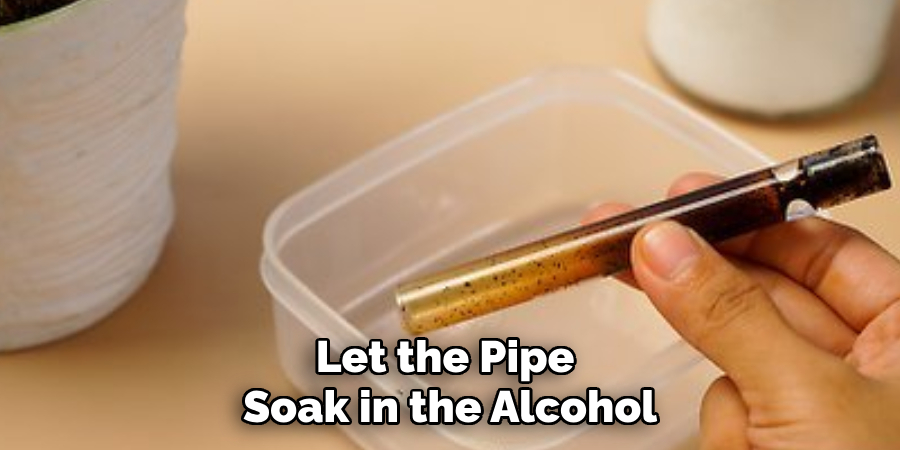
If there is still residue inside the pipe after shaking, let the pipe soak in the alcohol-salt solution for up to an hour. Soaking gives the alcohol more time to break down any stubborn build-up, making it easier to remove later. Check the pipe periodically and shake the bag lightly to agitate the solution and help dissolve any remaining debris. This step is especially useful for older or heavily used pipes that haven’t been cleaned in a while.
5. Use a Soft Brush or Pipe Cleaner for Interior Cleaning
Once the pipe has soaked, use a soft brush or pipe cleaner to reach inside the pipe and remove any remaining debris. Pipe cleaners are particularly effective for ceramic pipes with narrow or curved channels, while a soft brush or toothbrush can help scrub areas that are easily accessible. Gently work the brush or pipe cleaner through the pipe, paying extra attention to the bowl and airway, where residue tends to accumulate.
6. Rinse Thoroughly to Remove Residual Cleaner
After cleaning with alcohol and salt, rinse the pipe thoroughly with warm water to remove any remaining cleaning solution. Hold the pipe under running water, ensuring all parts are rinsed, especially the bowl and mouthpiece. This step is crucial to prevent any alcohol taste or salt residue from lingering in the pipe. Shake out excess water and allow the pipe to air dry completely before using it again.
7. Try a Vinegar and Baking Soda Solution for Natural Cleaning
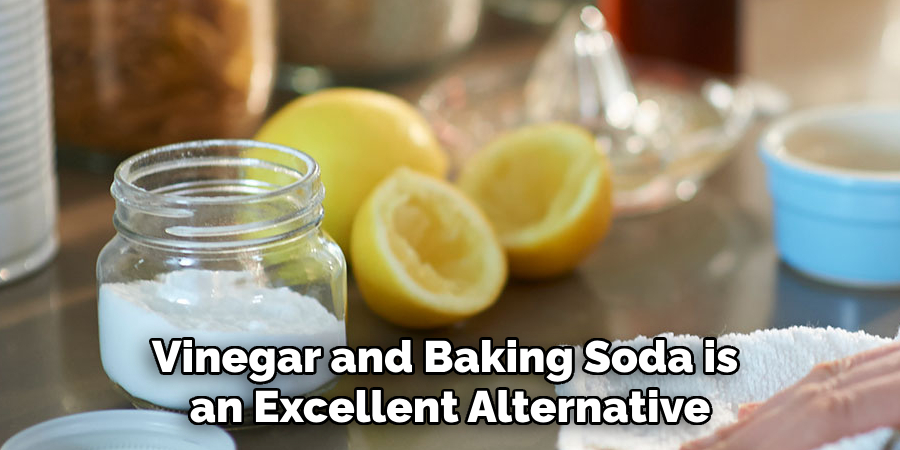
If you prefer a more natural cleaning method, a mixture of vinegar and baking soda is an excellent alternative. Place the pipe in a container, add a small amount of baking soda to the bowl and inner chambers, then pour vinegar over it. The solution will fizz, helping to break down the resin and grime. Let the pipe sit in this solution for about 15–30 minutes, then scrub with a brush and rinse thoroughly with water. This method is gentle on ceramic while still being effective.
8. Use Boiling Water for a Quick Clean (with Caution)
Boiling water can also be an effective cleaning method, but it requires caution, as extreme heat may damage some ceramic pipes. Place the pipe in a pot of water and bring it to a gentle simmer. Allow the pipe to soak for a few minutes, then carefully remove it with tongs. The hot water softens residue, making it easier to scrub off with a brush. Be sure to let the pipe cool gradually to avoid cracking due to sudden temperature changes.
9. Scrub Small Areas with Cotton Swabs
For small or hard-to-reach areas, cotton swabs are excellent for spot-cleaning. Dip a cotton swab in isopropyl alcohol and use it to scrub around the bowl, mouthpiece, and any grooves or detailed areas. Cotton swabs offer precision, allowing you to clean delicate or intricate parts without risking damage to the ceramic surface. Replace swabs as they become dirty, ensuring a thorough clean in each area.
10. Dry the Pipe Completely Before Use
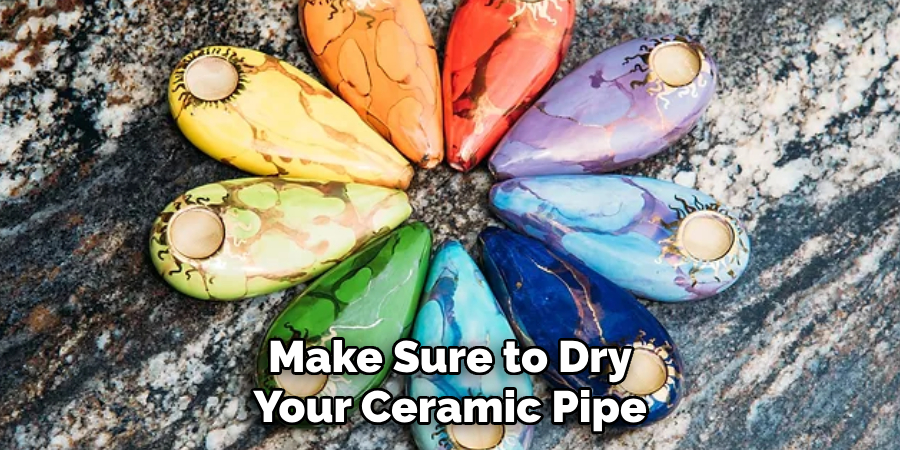
After rinsing, make sure to dry your ceramic pipe thoroughly before using it again. Use a paper towel or soft cloth to blot away excess water, then let the pipe air dry completely. Placing it on a soft towel in a warm, well-ventilated area will speed up the drying process. Avoid using the pipe until it’s fully dry, as moisture can affect the quality of the smoke and may cause further residue to build up.
Common Mistakes to Avoid
Cleaning a ceramic pipe may seem straightforward, but certain errors can compromise the process or even damage the pipe. One common mistake is using overly hot water, which can cause thermal shock and lead to cracking. Always use warm water instead of hot for initial rinses.
Another mistake to avoid is not allowing the pipe to dry completely after cleaning, as lingering moisture can affect smoking quality and lead to additional residue build-up. Furthermore, using harsh chemicals not intended for pipe cleaning can ruin the ceramic finish or leave harmful residues. Finally, avoid being too forceful when scrubbing with brushes or pipe cleaners; excessive pressure can scratch or chip the ceramic surface. By steering clear of these pitfalls, you can maintain your ceramic pipe in pristine condition.
Conclusion
Regular maintenance and proper cleaning are essential for keeping your ceramic pipe in optimal condition. By using the methods outlined, you can effectively remove residue and grime, extending the life of your pipe and ensuring a clean smoking experience. Whether you choose a chemical or natural cleaning solution, remember to always handle your pipe with care and patience to prevent any damage. Regular cleaning not only maintains the pipe’s appearance but also enhances its performance, providing you with a better and more enjoyable smoking session. Thanks for reading our blog post on how to clean ceramic pipe! We hope you found it helpful and informative.
Specialization:
- Master of wheel-throwing, hand-building, and advanced glazing techniques
- Focus on creating both functional pottery and decorative art pieces
Recognition:
- Celebrated by collectors and art enthusiasts for creating one-of-a-kind pieces that blend artistry with functionality
- Participates in local and national exhibitions, earning accolades for his innovative designs and craftsmanship
Passion:
- Deeply committed to exploring and pushing the boundaries of ceramic artistry
- Continuously experiments with new materials, firing techniques, and artistic concepts to evolve his craft
Personal Philosophy:
- Believes in the transformative power of art, aiming to evoke emotions and connections through his ceramic creations
- Advocates for sustainability in ceramics, using eco-friendly materials and practices whenever possible


